Going down to the woods tonight – John Pawsey, Shimpling Park Farm
Fully certified organic since 2007
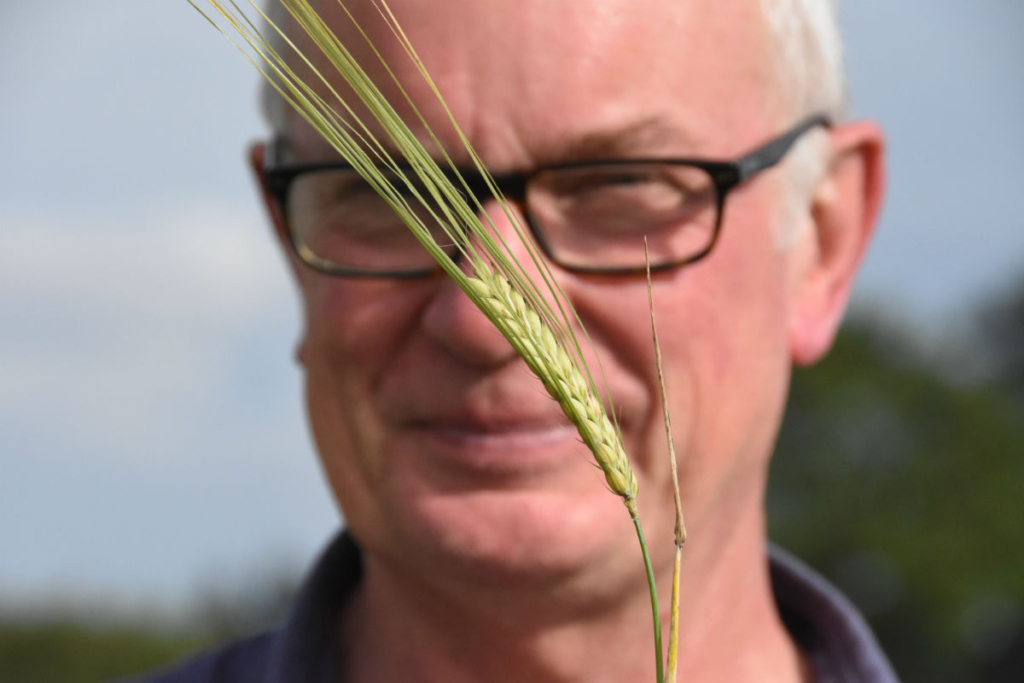
When we meet in the farm office, John Pawsey seems at ease with himself and the world. It’s hard to imagine he ever wanted to be anything but a farmer. The opposite is true he says. He comes from a farming family, but grew up with his mum, away from the farm and as a teenager music was the only thing he really loved. He played double bass and bass, had a small band and wanted to be a talent scout for new and emerging bands. Then he was expelled from school and with few other options he started working as a farmhand on his maternal grandfather’s farm. Pawsey was 22 when his grandfather died unexpectedly. From one day to the next he was supposed to step up and run the farm. An expectation he rebelled against for six or seven years, he says, and to this day he is grateful to the team of eight farm employees: “They trained me and helped me through it”.
What Pawsey found so hard to deal with was the feeling of having missed out on travel and seeing the world. When he met Alice who is now his wife, the farm team made it possible for the young couple to take time off the farm and go places: they visited numerous countries in Africa, South and East Asia. “I mostly wanted to spend time in cities, watching people, experiencing city life because for the rest of the year I would be farming and living in the countryside”, he says.
The sprayer and the hare
In the mid 1990s, Pawsey was done with travelling and worked on the farm fulltime. Like his grandfather, he farmed conventionally, but he started to notice that yields were going down. And there were just so many pests to deal with. While he was mixing and spraying all sorts of chemicals his concerns grew: what impact was it all having on wildlife, on soils and on the food he produced? A neighbour of his was working organically, Pawsey started to think about conversion and tried to figure out how an organic rotation might work on his farm. He still remembers the day he put on his protective suit, sat in the hermetically sealed tractor cab and began spraying a field. “I thought: I am the only one safe here”. Suddenly a rabbit ran across the field and under the sprayer. By the time it reached the field margin it had been doused in chemicals. Pawsey saw it sit down to lick its fur. “I don’t know what happened to it”, he says, “but I knew that I would go organic”.
Going organic
In 1999 he converted the first 120 hectares to organic, by 2007 the whole 649 ha farm was certified. Pawsey now works with a tried and tested six year rotation. It starts with two years of fertility building with herbal leys including red, crimson, and Persian clover, bird’s-foot trefoil, sainfoin, grasses and chicory. It’s followed by winter wheat. Short varieties proved to be no match for the weeds, but heritage wheat varieties, spelt and oats are: they are taller and able to outgrow the weeds. After two years of sowing crops in autumn he switches to spring oats (which are very good at suppressing weeds), barley or triticale.
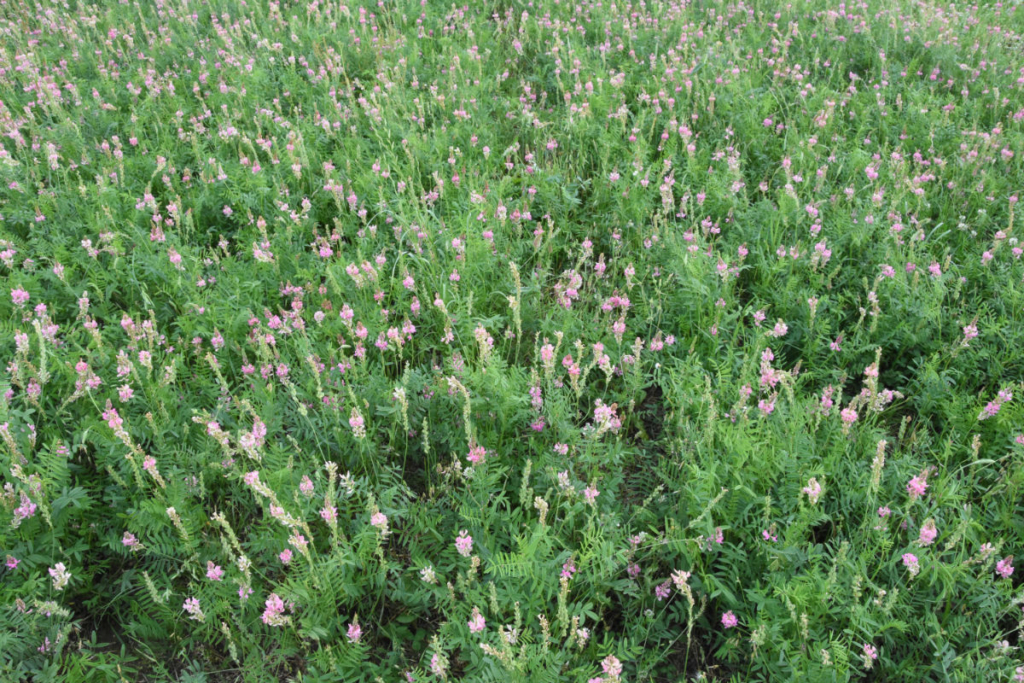
Then come winter beans. There often is a weed problem with beans, but they are needed for nitrogen fixing – and honey from bean flowers is delicious, says Pawsey. Last in the rotation is spring barley, undersown with cover crops that will grow into leys after harvest. He’d prefer to grow spring wheat once more because the leys underneath receive more light to grow and because of the organic milling premium, but there is a problem with gout fly and so far he hasn’t found a means to combat them.
For a long time, organic farmers ploughed to get rid of weeds. Now there are mechanical weeders such as the tine harrow which takes out broad leaf weeds, “though you need to get at them young”, says Pawsey. Then there is the inter-row hoe which can be combined with a seeder and a venerable and rare “weed surfer” which cuts the weeds that have grown taller than the crop and prevents them from seeding. But Pawsey sees mechanical weeders only as a backstop: “If you get things right and the system is in balance there should be no need for mechanical weeding”.
Sheep and resilience
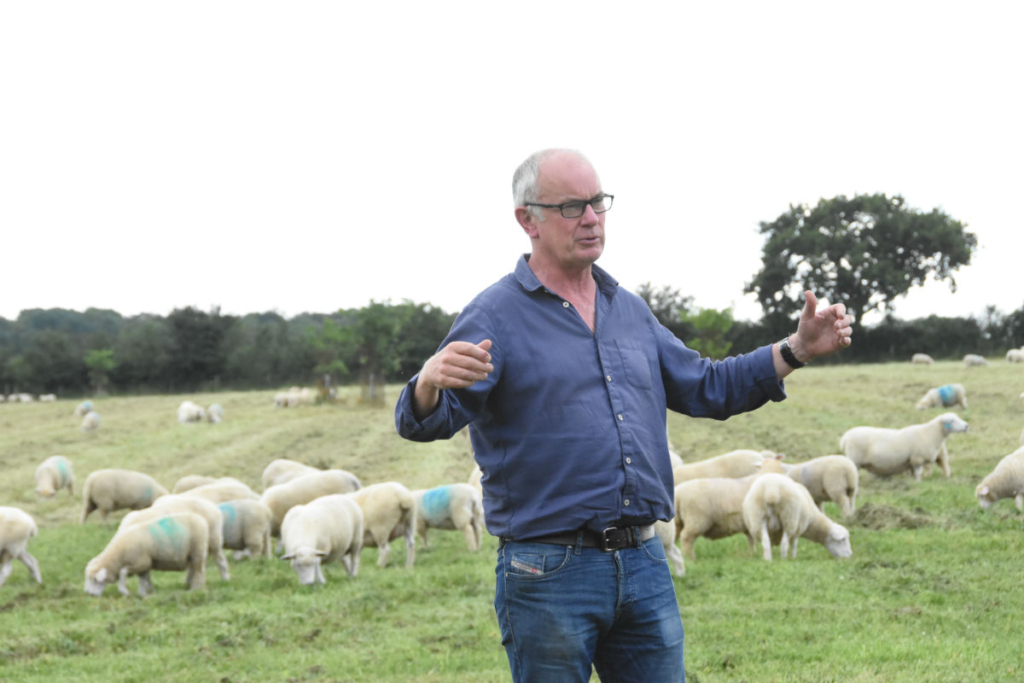
Despite of all the careful planning there were setbacks. “In 2012 the harvest was awful”, says Pawsey, there were lots of problems with crop diseases such as rust and he realised he needed more diversity on the farm to build up resilience. One way to do that was to bring back livestock: if the crop harvest was bad he would have meat to sell and the fertility building herbal leys could be grazed – essentially free feed. Initially he thought about cattle, but the costs for sheds and permanent fencing seemed high and he decided to go for sheep. He looked at different breeds and finally chose New Zealand Romneys which have good feet, good worm resistance, the ewes are good mothers and they can stay outside year-round. The herd has now grown to 1,000 ewes, and having grazing animals on the farm will have contributed to the increase in soil organic matter (SOM) which increased from 2.9 percent to over 6 percent. But Pawsey is still thinking about getting cattle… dairy cows would be nice to have on the farm, or maybe a dual-purpose breed…
Don’t grow what you can’t sell
“We never put a crop in the ground without securing a market for it”, says Pawsey who plans even small changes very carefully. “Other organic farmers have told me that I overthink stuff”, he says. He’s certainly never regretted going organic. The farm is financially profitable and he finds farming organically far more creative. “If you want to be told by an agronomist what to do, organic farming is not for you.” But true pioneers, who, like Pawsey, have to forge their own path into unchartered territory, may have to be extra cautious: “As a conventional farmer I did what the neighbours did. I went to all the conferences and had a good time with other farmers, the chemical companies sent representatives. But with the conversion all that camaraderie disappeared. The conferences were irrelevant. There was no point in consulting the neighbours, quite often they didn’t like what I did on the farm and thought I was nuts. It got quite lonely”. To him, the ORC and in particular the field days “were a complete life line”. And he continues to treasure the ORC bulletins, the new as well as the old ones. “They are a great resource and often the only source of information on a specific problem”, he says.
If in doubt, Pawsey takes the scientific approach and conducts a field trial. At present he is testing how good different crop varieties are at suppressing weeds – is it necessary to hoe or are the weeds shaded out? If they remain small they don’t really compete for resources and there is no need to remove them. How well are heritage varieties performing – so far, the two old barley varieties, Devon’s Archer and Golden Pheasant, are looking good. And what happens when you grow Red Fife wheat together with beans? The yield may be less but you’ve got two crops. In a six-year trial, Pawsey is trying to work out, whether lucerne or sainfoin are performing better. What do the sheep prefer? Which grows back faster? And can buckwheat help to release phosphate into the soil, making it available for next year’s crop? Depending on the germination rate next spring it might be worth including it into the rotation.
The organic commodity trap
Until not too long ago, at harvest time, John Pawsey would talk to different companies about his cropping plans and what their needs might be. But now everyone just tries to buy as cheaply as possible. The same goes for the local feedmill. He now sells mostly through Organic Arable, focussing on heritage varieties. And he will probably start milling grain on farm again and sell it through local shops.
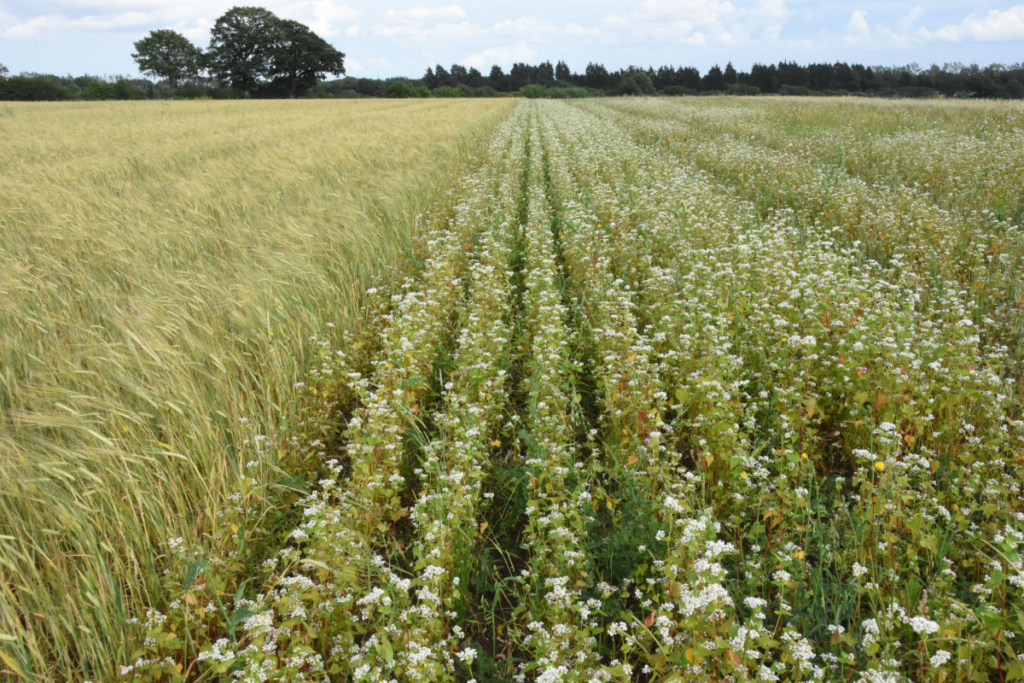
The lambs go to an abattoir in Essex or Norfolk, are butchered and then sold under the Shimpling Farm name to individual customers and restaurants in Suffolk, Norfolk and Essex. The success is down to Pawsey’s wife Alice, who is “terrific at marketing and communication” and to the Shimpling Farm brand: the lambs have of course been raised organically, but they can’t be sold as organic because the local abattoir was closed down and now the closest abattoir with organic certification is in Wales. Pawsey doesn’t want to send his animals half way across the country, even the 90-minute drive they have to endure now is too much in his opinion. It would be “a dream” to be able to slaughter on farm, he says, but given the regulatory framework which is geared towards large abattoirs, he currently can’t see how this could be made to work.
Time in the woods
An 11 ha ancient woodland area is part of the farm. In June, Pawsey and his wife spent a fortnight there, camping. It was a time and space that allowed him to have his mind settle, to sit, be quiet and just observe. He realised that these woodlands are a beautiful and fully functioning ecosystem and that’s exactly what they should strive for on the farm. “Our fields are still overmanaged”, he says.
He has started an agroforestry project, planting trees such as oak, holly and walnut, species that grow in the ancient woods.
He is thinking about giving up contract farming. At present he and his employees take care of 980 ha of land on other farms. “It’s a lot of administrative work”, says Pawnsey, maybe he should spend that time to introduce more changes on Shimpling Farm. He will continue to grow seed mixes for pollinators and wild birds under the Countryside Stewardship Scheme that will run until 2023. After that he will see what stewardship schemes might be available under ELMS.
And he wants to start some rewilding projects – there is a small stream his grandfather had straightened – why not let it meander again? And he is re-establishing the “ghost ponds” he found on old estate maps: they were established some 150 years ago for fish and as watering places for livestock and wildlife until they were filled in and the land farmed. The first pond has been carefully dug out, following the sediment lines and contours of the old pond. “They will be fabulous for all sorts of birds”, says Pawsey. Of course it would be great to get paid for things like that, but he will do them anyway, he says. And he wants to communicate what he is doing through farm walks, school visits – before the pandemic they did 25 per year – as well as through field days.
Yes, it takes him a long time to take decisions and introduce changes. “There is only a certain amount I can take on at any given time”, he says. But in the end it is down to his gut feelings, his intuition allows him to act. It’s a certainty that he has always experienced through music and being part of a band. “I need more headspace to know what is right for us”, Pawsey says, ”maybe I need to spend more time in the woods to give myself time to observe, to think and to just be”.
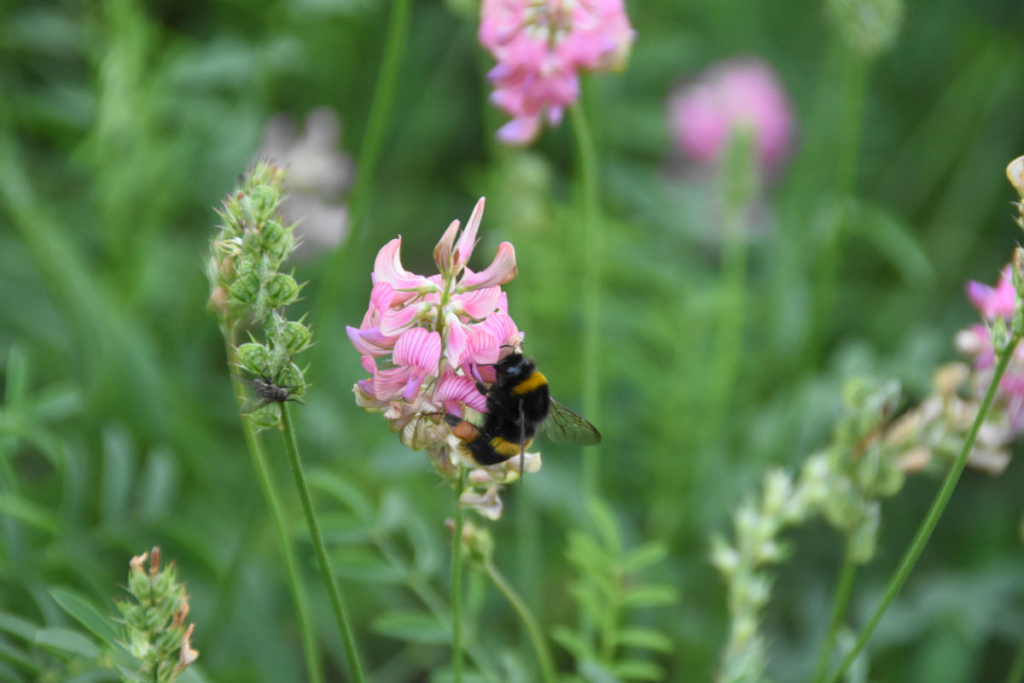
Written by Marianne Landzettel, with photographs by Martin Kunz


